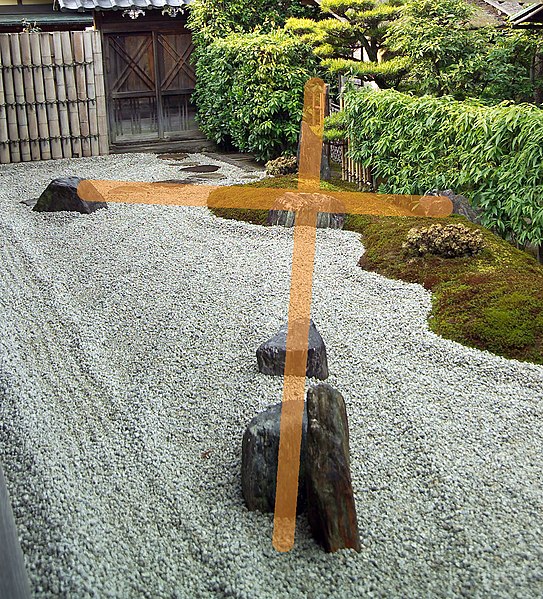
The next Saturday, I was to meet my Introduction to Japanese Culture class in the afternoon for Aoi Matsuri, one of the really big festivals in Kyoto. While I was out, I took a detour over to that shop right outside Daitokuji to see if the lady knew if/where I could get my netsuke fixed; one of the dragon's beady little eyes had fallen out. Since I'd bought the netsuke from that particular shop, the lady said she could repair it for free--it was really, really nice of her. And while I was near Daitokuji, and had some time before I needed to run off to Kamigamo Jinja, I figured I would walk through the grounds again, in case there was anything open I hadn't seen.

As it so happened, one of the sub-temples which was closed down the first time we visited was open this time around. The daimyo Otomo Sori founded the Zuiho-in sub-temple in Daitokuji monastery before the mid-16th century, around the same time as the first influx of Spanish and Portuguese trade and missionaries. Otomo was among those who converted to Christianity, and was thereafter known as the "Christian Daimyo." Not long afterward, Christianity was outlawed in Japan.

The floorboards in the entry hall are made from Indian rosewood

and just outside of the entry hall...


the main karesansui garden, designed by Mirei Shigemori



and walking around to the garden on the other side...


a stone path leading away the Garden of the Cross, which we'll see in full soon




a screen painting in one of the tea rooms, with duckies


(The following photo isn't mine, but I found it on Wikipedia,
and the owner has released it into public domain.)
Here is the Garden of the Cross, also designed by Mirei Shigemori, in honor of Otomo.
You can see how the rocks are arranged in a cross.

While Christianity was never taught at Zuiho-in (of the Rinzai Buddhist sect),
the temple has always respected its founder's beliefs

Back at the stone lantern just outside of the entrance hall we saw earlier.
The lantern in the rocks lines up directly with the vertical line of the cross in the garden,
and buried beneath the lantern is a statue of the Virgin Mary--to symbolize
the hundreds of years in which Christianity was banned.

I'm not sure who this little guy is peeking out from behind the water basin,
but he's kinda cute, in a possibly demonic sort of way.
...He might could be a guardian with a scary smile. They do that sometimes.


A peek inside Sangen-in, another sub-temple of Daitokuji


And now we leave the tranquility of the Daitokuji grounds for the tranquility of the surrounding residential areas...





Time to go.
